Traditional Japanese vegetarian dishes are a collection of culinary creations that have been passed down through generations and are deeply rooted in Buddhist principles of non-violence and compassion. These dishes are not only delicious and satisfying but also offer a wealth of health benefits.
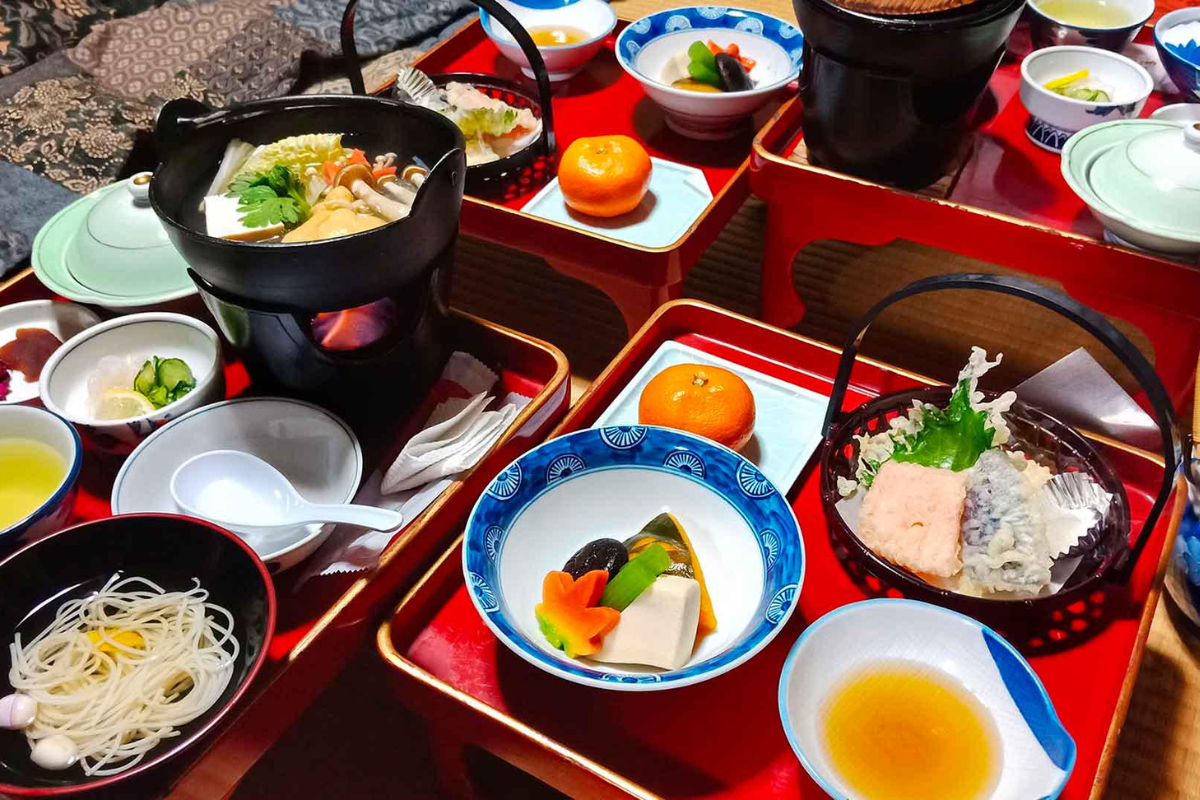
Japan offers a diverse array of healthy traditional vegetarian dishes, reflecting its rich culinary heritage and Buddhist influences. These dishes often feature tofu, vegetables, seaweed, and other plant-based ingredients, showcasing a balance of flavors and textures. Japanese cuisine is rich in nutrients that are beneficial for health. These culinary treasures highlight Japan’s commitment to wholesome and flavorful vegetarian cuisine.
Shojin ryori: A dish imbued with Buddhist philosophy
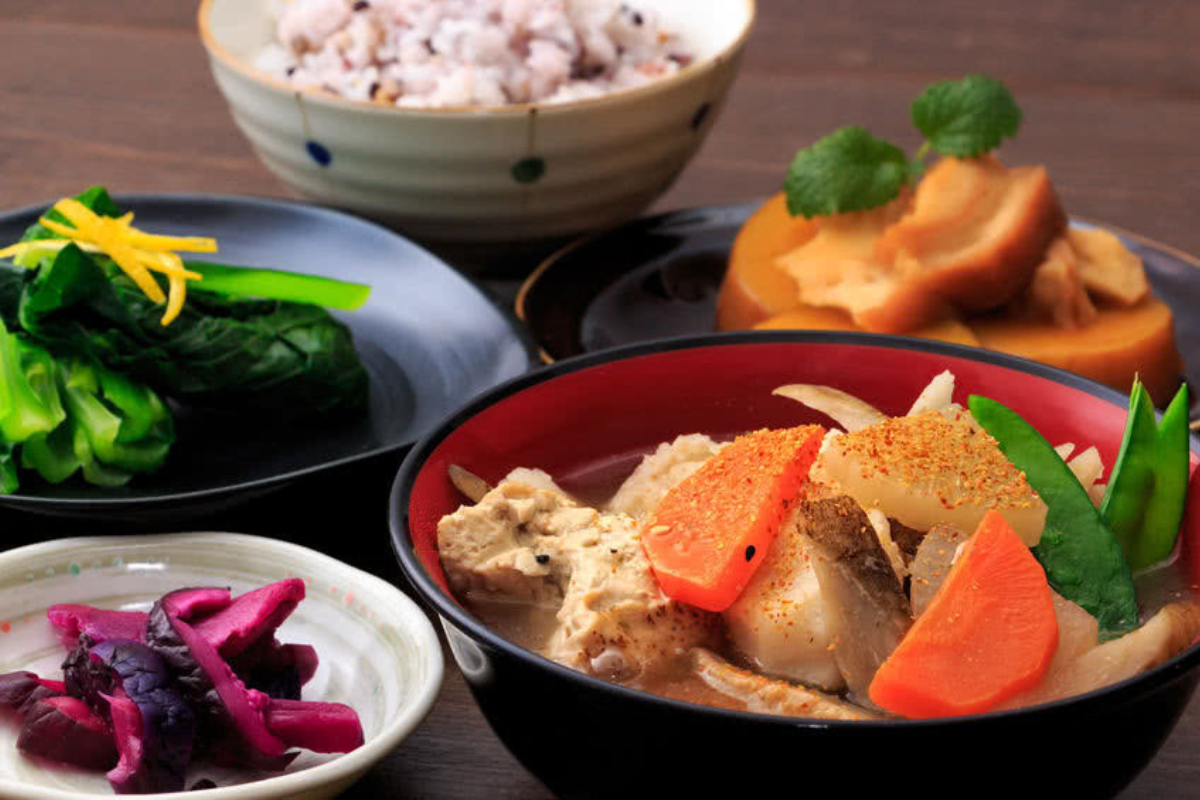
Photo: Savor Japan
Shojin ryori is a traditional Japanese cuisine based on Buddhist principles of non-violence and compassion. It is typically prepared without meat, fish, eggs, or dairy products and instead focuses on plant-based ingredients such as tofu, vegetables, seaweed, and grains.
To give monks a wholesome and well-balanced diet, the Japanese Zen monasteries were the birthplace of shojin ryori. It gained popularity over time, currently regarded as a unique and significant aspect of Japanese culinary culture, even among non-foodies.
Shojin ryori is more than just a dietary restriction; it is also a philosophy of life. It emphasizes the importance of simplicity, moderation, and mindfulness. The dishes are often beautifully presented and are intended to be savored slowly and appreciatively. People of different ages and ethnicities can appreciate this rustic cuisine. It’s a tasty and healthy way to learn about Japanese culture.
Nasu dengaku: Delicious dish with diverse flavors
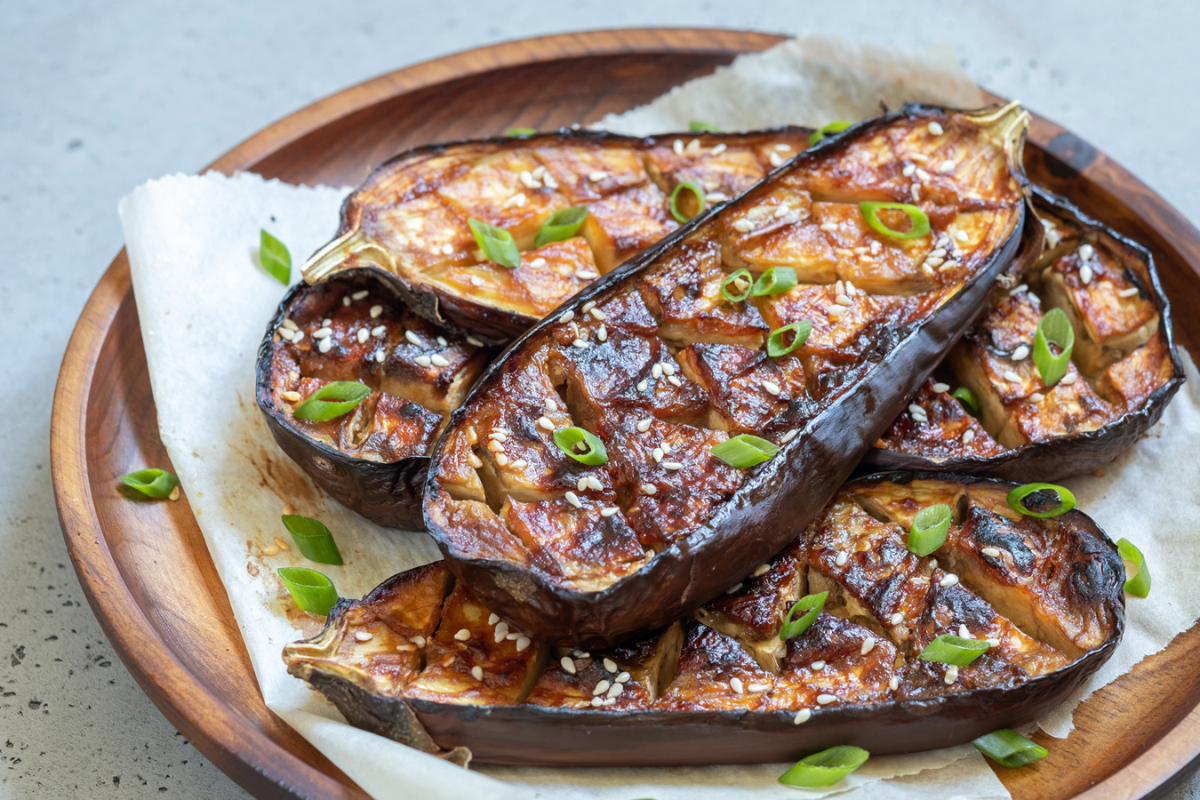
Photo: Asian Inspirations
Nasu dengaku is a traditional Japanese dish that has been around for centuries. It is believed to have originated in the Nara period when Buddhist monks brought this dish to Japan from China.
Nasu dengaku is a simple dish that consists of grilled eggplant slices that are covered in a sweet and savory miso glaze. The eggplant is typically grilled until it is soft and tender, and the glaze is usually caramelized and slightly crispy. This healthy dish has a complex flavor that is both sweet and savory. The miso glaze adds a rich umami flavor, while the eggplant provides a slightly smoky and earthy taste. The sweetness of the mirin and sugar helps to balance out the savory flavors.
Nasu dengaku is typically served as a side dish or snack. It can be enjoyed hot or cold, and it pairs well with a variety of dishes, such as rice, noodles, and stir-fries.
It is a nutritious dish that is a good source of fiber, vitamins, and minerals. The eggplant is a good source of vitamins, as well as fiber. The miso glaze is a good source of protein and probiotics. Nasu dengaku is truly a popular dish in Japan, often served at festivals and celebrations or when eggplants are in season.
Zaru soba: A delicious and refreshing Japanese meal
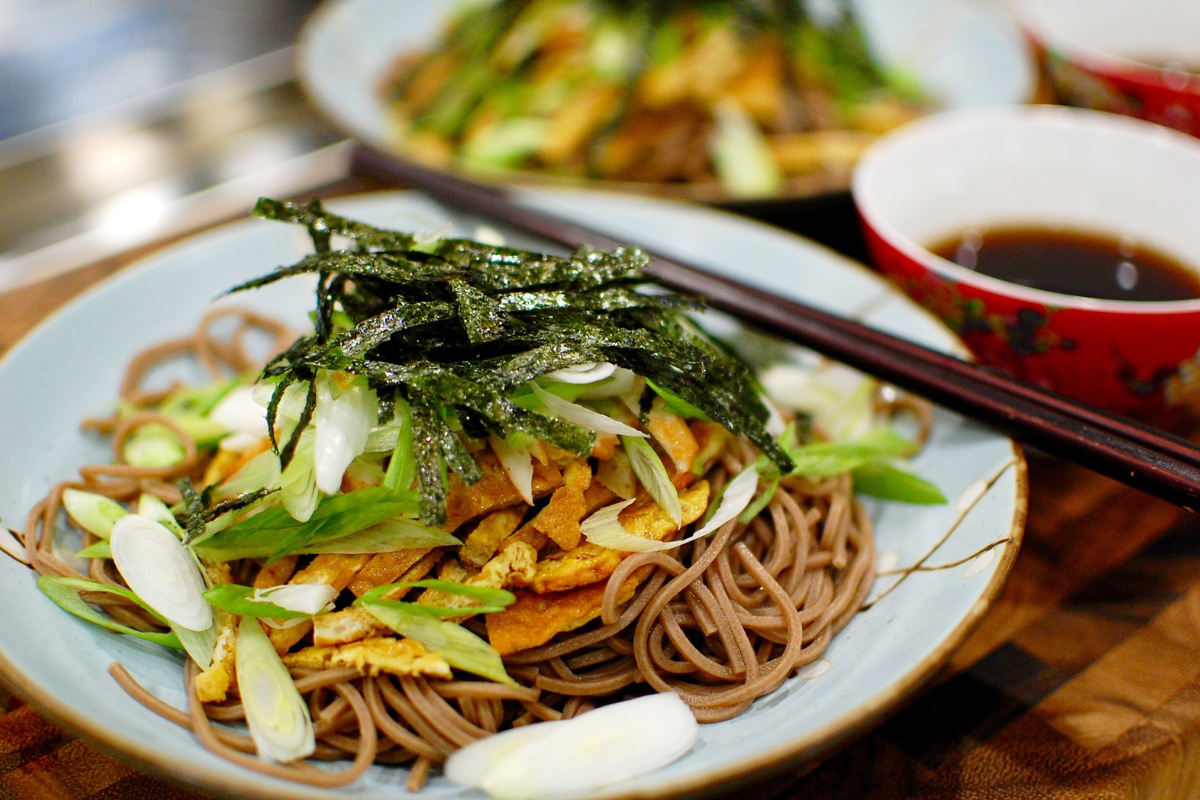
Photo:The 350 Degree Oven
Zaru soba is a true embodiment of simplicity and elegance. Its core components, including cold buckwheat noodles, a savory dipping sauce, and a medley of garnishes come together in perfect harmony, creating a symphony of textures and tastes.
The star of the dish is undoubtedly the soba noodles, made from buckwheat flour, renowned for their earthy flavor and delightful bite. These noodles are meticulously cooked to achieve the ideal level of firmness, allowing them to retain their integrity when chilled.
The dipping sauce is the culinary maestro, skillfully orchestrating the flavors. A blend of soy sauce, mirin, and dashi, it offers a balance of saltiness, sweetness, and umami, perfectly complementing the noodles’ subtle taste.
A symphony of garnishes elevates the zaru soba experience. Shredded nori, with its delicate sea-like aroma, adds depth and complexity. Wasabi, a fiery condiment, provides a burst of heat, while pickled ginger refreshes the palate with its tangy sweetness.
Zaru soba is not just a dish; it’s an experience. The act of dipping the chilled noodles into the sauce, savoring the harmonious blend of flavors, and cleansing the palate with the garnishes is a culinary ritual that embodies Japanese mindfulness and appreciation for simplicity.
Yaki onigiri: A humble grilled rice ball
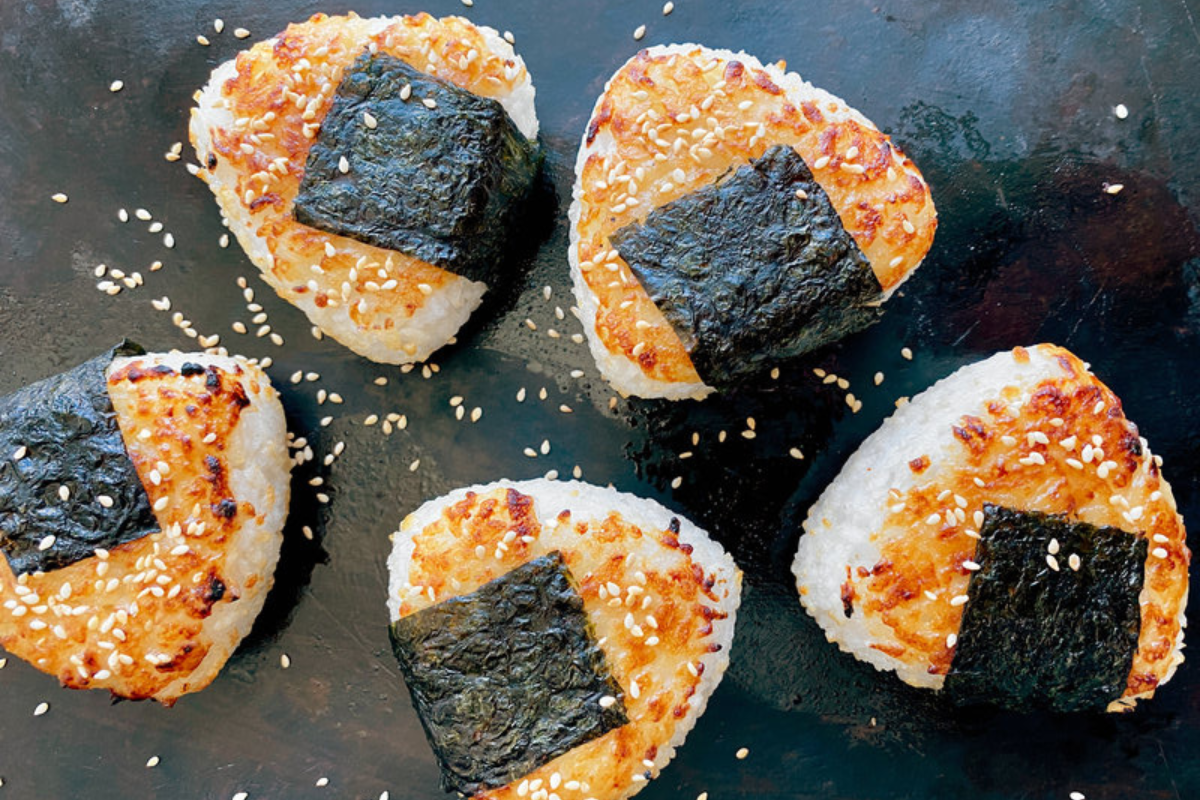
Photo: NY Times
Yaki onigiri is a culinary gem that embodies Japanese ingenuity and comfort. These bite-sized morsels, born from the desire to transform leftover rice into a delightful treat, have transcended their humble origins to become a beloved Japanese snack and meal staple.
The foundation of yaki onigiri lies in the perfectly cooked rice, often seasoned with subtle hints of mirin and salt, offering a subtle sweetness and savory depth. This warm, fluffy rice is then skillfully molded into a triangular or cylindrical shape, ready to undergo its transformation.
The grilling process elevates yaki onigiri to new heights of flavor and texture. A thin layer of soy sauce or miso glaze is applied to the rice ball’s surface, creating a caramelized crust that adds a delightful crunch and savory depth. The gentle heat of the grill imparts a smoky aroma, further enhancing the rice’s appeal.
Yaki onigiri’s versatility is a testament to its enduring popularity. It can be enjoyed plain, savoring the simple harmony of rice and glaze, or filled with a variety of savory delights. From the classic tuna mayonnaise to the comforting flavors of pickled umeboshi, there’s a yaki onigiri variation to suit every palate.
Whether enjoyed as a quick snack or a hearty meal accompaniment, yaki onigiri stands as a culinary masterpiece in its own right. Its simplicity, versatility, and comforting flavors have captured the hearts and taste buds of people worldwide, solidifying its place as a true icon of Japanese cuisine.

